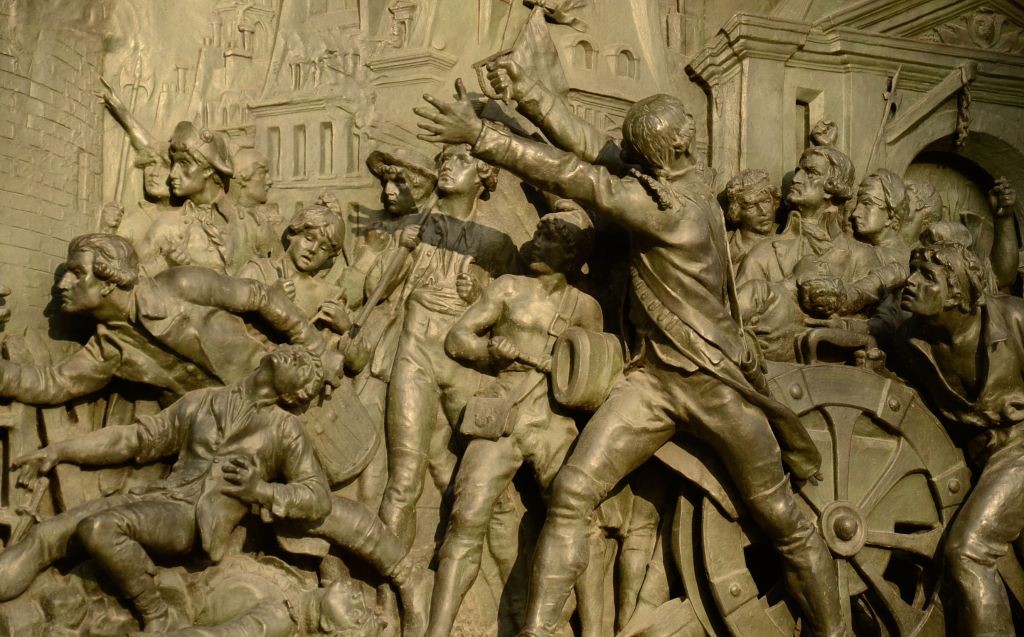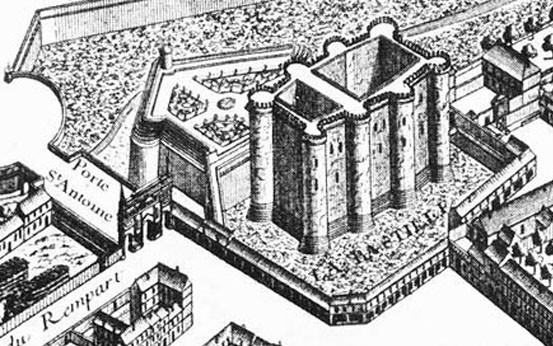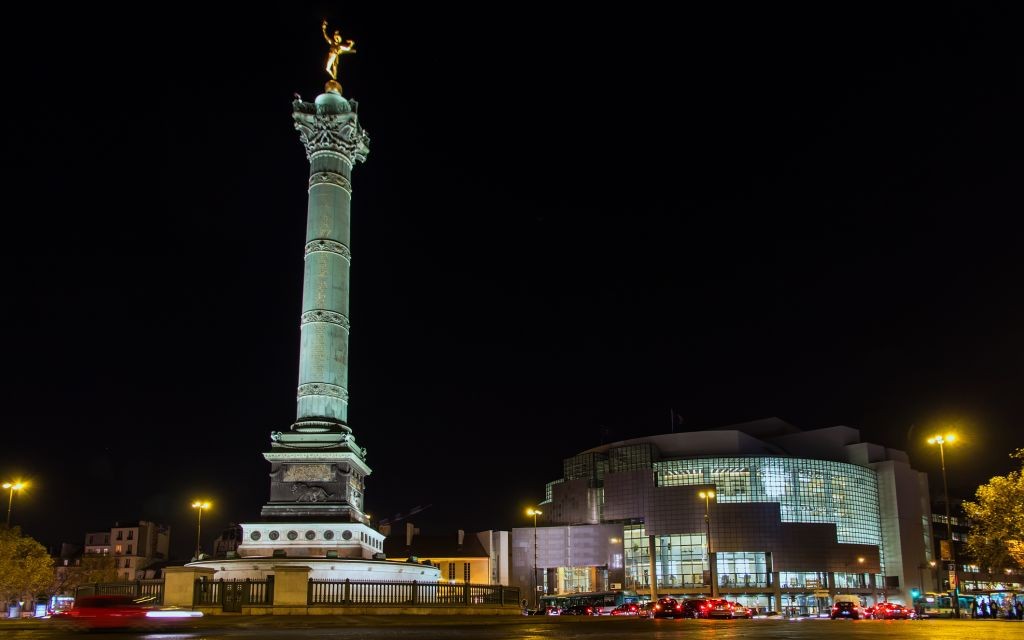“Liberty, equality, fraternity.” The national motto of France traces its origins to the French Revolution. Celebrated just 10 days after our Independence Day, July 14 celebrates the storming of Bastille in 1790, a flashpoint of the French Revolution that eventually led to the overthrow of the French Monarchy, altering modern history and ushering in an era of democracy. This is how the day went down.
After ascending the throne in the midst of a financial crisis, Louis XVI called representatives of the French people for the Estates-General for May 1789, the first time the king has done so in more than 150 years. These “Estates” were categorized as the First Estate (clergy), Second Estate (nobility) and Third Estate (commoners), tasked with compiling a Book of Grievances, which although advocated ideas deemed radical just months before, was overwhelmingly supportive of the monarchy.

The Storming of Bastille on the Statue of Marianne by Leopold Morice, Place de la Republique, Paris, France © Piet Hagenaars | Dreamstime
As negotiations stagnated at the hands of France’s nobility, the Third Estate (who made up 95 percent of the country versus the Second Estate’s 2 percent) moved to break away from the Estates-General to form the revolutionary National Assembly, inviting clergy and nobility to join, but explicitly representing the people, making it clear they will draft a constitution with or without them.
Despite Louis XVI’s attempts to prevent the meeting, members took the pivotal Tennis Court Oath, named after the makeshift conference room held inside a tennis court near the Palace of Versailles. The pledge, signed by 576 of 577 members, stated the assembly was to stand united against the King and to not separate until a constitution was drafted. France was already feeling revolutionary fervor with the creation of the assembly. Censorship of the press had been lifted, allowing the publication of assembly debates, whose thoughts spread like wildfire among the people, along with increasing amounts of violence.

Bastille Prison © M&S Literary Adventures | Flickr
In the meantime, on July 11, Louis XVI banished financial minister Jacques Necker, who was increasingly hostile towards the monarchy and sympathetic to the Third Estate. When news reached the National Assembly the next day, many took it as a pre-emptive strike by conservative forces, calling for open rebellion in response to the appearance of Swiss and German mercenaries who made up a large portion of the Royal Army. With rising food prices, Paris was taken by riots and looting. People began to plunder arms and even gained support of the King’s militarily-experienced French Guard.
By the morning of July 14, Paris was in a state of emergency, with the assembly in armed conflict through the National Guard, a “bourgeois militia” led by Lafayette. They had earlier stormed the Hôtel des Invalides, gathering 30,000 muskets, but with no gunpowder. Although it only housed seven elderly prisoners, the National Guard then set their eyes on Bastille, which contained 13,600 kilograms of gunpowder and the looming symbol of France’s Ancien Régime.

The Column of Bastille © Digikhmer | Dreamstime
A crowd formed in front of the prison calling for its surrender. Two people entered for negotiations, though nothing seemed to materialize, with the people growing impatient outside. Around 1:30 pm, the crowd managed to enter the undefended outer courtyard, leading to the death of one person when the castle’s drawbridge was allowed to fall on the people. It was around then gunfire rang out, with various theories as to what set off the violence. Some believe a cannon was ordered to fire upon the people by Governor Marquis Bernard de Lunay, killing several women and men and instigating a mob.
By 3:00 pm, the crowd gained the support of the deserting troops from the French army, intensifying the violence. The prison fell at 5:30 pm, after the Governor, facing inevitable defeat, ordered a ceasefire and prevented a massacre from happening on both sides (he was beheaded and paraded around the streets nonetheless).
The events that unfolded July 14 would prove to be pivotal, inspiring an entire country and altering the course of modern history. Informed about the violence the next day, Louis XVI asked the Duke of La Rochefoucauld, “Is it a revolt?,” to which he replied, “No sire, it’s not a revolt; it’s a revolution.”
Read This Next
Best Day Trips from Paris, France
Destination
Mar 6, 2015#TrazeeTravel
Insta FeedDining/Entertainment
Apr 17, 2025Don’t Miss World’s First 360-Degree Nomadic Concert Experience
Cercle Odyssey, the world’s first large-scale, 360-degree nomadic concert experience, announced its exciting lineup for its 2025 debut. This concert series will redefine the boundaries of music and visual storytelling, bringing together artists known for their ability to combine sounds and visuals into immersive experiences.
Sponsored Content
AmaWaterways’ Specialty River Cruises
When you embark on a river cruise with award-winning AmaWaterways, unpack once and step aboard a world of unparalleled experiences. With enriching excursions, exquisite locally sourced food and wine, nightly entertainment and more included in the fare, you will learn why AmaWaterways has the most returning guests out of any river cruise line.
Hotel
Apr 17, 2025Anantara Golden Triangle Unveils The Mekong Explorer Tent
One of Thailand’s most unique and luxurious stays is now available at Anantara Golden Triangle Elephant Camp & Resort: The Mekong Explorer Tent. The hillside retreat delivers panoramic views of Northern Thailand’s landscapes — perfect for stargazers, nature enthusiasts and explorers. The tent sits nearby the point where the borders for Thailand, Laos and Myanmar meet, in a 160-acre bamboo forest.
Destinations / North America
Apr 16, 2025Hit the Open Road This Summer on a Nostalgic Road Trip
In a survey conducted by Club Wyndham, nearly twice as many respondents prefer driving versus flying to their vacation destination, with 60 percent stating they have not seen enough of the United States. Pack up the car and set out on a classic American road trip to these popular destinations inspired by Club Wyndham.
Sponsored Content
Madrid: The Charm of an Authentic City
They say Madrid is in vogue for many reasons: its lifestyle, its heritage, its cuisine and all of its new attractions. And it’s true, because Madrid is on the radar of travelers looking for a cutting-edge destination that still holds onto its essence. Join us as we explore its charms.
Destinations / North America
Apr 16, 2025Best State Parks to Visit in Arkansas
Find outdoor adventure and fewer crowds in Arkansas when you visit some of the states’ more than 50 state parks. All are free to visit and offer a wide variety of experiences, activities and landscapes.

ShareThis